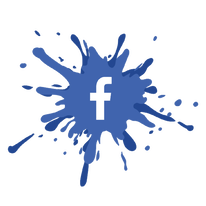|
Biofeedback, progressive muscle relaxation, and abdominal breathing are just several of the behavioral medicine techniques proven to reduce headaches and improve the quality of functioning. When employed regularly and combined with preventative medication and optimized acute therapy, quality of life is significantly better than with medication alone.
Biofeedback and progressive muscles relaxation are the most widely accepted non-drug techniques for headache control and prevention. Their effectiveness has been demonstrated across 25 years of research and well over 100 investigations. Biofeedback and relaxation training typically yield a 45% to 60% reduction in headache frequency and severity. This is equivalent to the reduction in headache achieved by many headache medications, such as propranolol (Inderal®) and amitriptyline (Elavil®), but without any of the negative side effects. The most common limitation of biofeedback and relaxation training is that it requires time commitment and implementation effort on behalf of the patient. Biofeedback sessions may take one hour and training sessions may include several weekly visits over the course of several months. For many headache sufferers, the combination of drug and non-drug treatments yields the most significant improvement in headache activity. For example, the average improvement with either biofeedback or propranolol alone is a 55% reduction in migraine. However, when biofeedback is combined with propranolol, the average improvement is a 70% reduction in migraine. Relaxation training Relaxation training is recommended for headache management because headaches are often related to the body’s reaction to everyday stresses like deadlines, demanding bosses, crying babies, honking horns, unpaid bills, and missed sleep, to name a few of life’s daily hassles. For headache-prone people, stress does not need to be excessive Unpredictability or change in life is all that is needed. Even normal everyday levels of stress can trigger a headache. Learning to relax Relaxation training is typically provided “live” in a clinic office by an experienced therapist (usually a psychologist). Learning to become deeply relaxed may take several sessions, so you may be scheduled for 4 to 10 visits. Visits may be scheduled a couple of weeks apart or once weekly. During your clinic visits, you will be given instructions and in-office practice sessions for a variety of relaxation techniques. Most likely you will be provided audiotapes and written materials to help you practice at home between your office visits. Then you will learn how to use these skills in your daily life. Relaxation training typically begins with two primary techniques: abdominal or deep breathing and progressive muscle relaxation. Summary Deep relaxation is a skill that teaches you how to recognize signs of stress in your body and how to reduce them before they reach the level of painful muscles and headache. These techniques work best to prevent headaches. However, they can be helpful if you use them as soon as you notice a headache starting, rather than during a full-blown attack. Biofeedback and relaxation techniques are most effective in preventing headaches, rather than treating a headache in progress. Nonetheless, many headache sufferers do report that these techniques often lessen the severity and duration of headache if used during a headache attack. Many patients find these techniques to be effective alternatives to medication. Research also shows that typically headaches are best controlled over time by combining these techniques with some use of preventive and acute medication. Gay L. Lipchik, PhD Ohio University Headache Treatment & Research Project. Westerville, OH Updated May 2008 from Headache, volume 9, issue 2. Summer 1998. |
|




